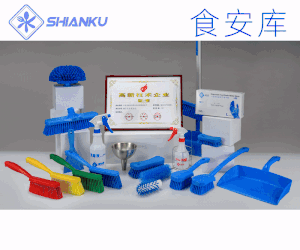While studies abound for the potential health benefits of coffee and tea consumption, questions remain about the bioavailability of the compounds they contain.
While the overall market for antioxidants was estimated to be worth $12bn (€8.8bn) in 2009, according to Euromonitor International, the combined markets of tea and coffee are much bigger, valued at over $70bn in retail sales a year for coffee and about $1 bn for tea.
“Coffee and tea are two of the most commonly consumed beverages in the world and thus represent a significant opportunity to positively affect disease risk and outcomes globally,” wrote Mario Ferruzzi from Purdue University in a recent paper in Physiology & Behavior (doi: 10.1016/j.physbeh.2010.01.035).
“A better understanding of how the beverage composition impacts phenolic profiles and their bioavailability is critical to development of beverage products designed to deliver specific health benefits,” he added.
Beginning with the bean
Ferruzzi notes that coffee is one of the richest sources of polyphenols in the Western diet, with one cup of the stuff providing 350 milligrams of phenolics. Of these, the most abundant compounds coffee are chlorogenic acids, making up to 12 per cent of the green coffee bean. The most abundant of these compounds is caffeic acid.
In much the same way as the processing of chocolate affects the finished product’s flavonoid content, the processing of tea and coffee affects the phenolic composition of the resultant beverage.
“While final cup levels of coffee phenolics depends on starting materials, roasting levels and brewing method heavy coffee consumers can approach dietary exposure levels approaching one gram of chlorogenic acids and their phenolic derivatives per day,” stated Ferruzzi.
A recent study by food giant Nestlé reported that adding milk to instant coffee had no effect on the uptake of coffee’s antioxidants, including caffeic acid, ferulic acid, and isoferulic acid.
According to findings of a study with nine people published in The Journal of Nutrition, the uptake of caffeic and ferulic acids was lower, however, when coffee was made with non-dairy creamer and sugar.
“Up until now there has been very little known about how proteins, especially from milk, influence the bioavailability and efficacy of coffee antioxidants,” said lead author Mathieu Renouf from Nestlé Research Center in Lausanne. “Our study is the first to show that coffee antioxidants are just as bioavailable in coffee with milk, as they are in black coffee.”
The benefits of a cuppa
SPONSORED LINK
Full Taste Without the Calories
That's the beauty of Zerose™ sweetener; a natural sugar alternative that tastes like sugar, but has no sugar, calories, aftertaste or artificial ingredients. So you can satisfy that sweet tooth naturally... Click here
The majority of science on tea has looked at green tea, with benefits reported for reducing the risk of Alzheimer's and certain cancers, improving cardiovascular and oral health, as well as aiding in weight management.
Green tea contains between 30 and 40 per cent of water-extractable polyphenols, while black tea (green tea that has been oxidized by fermentation) contains between 3 and 10 per cent. Oolong tea is semi-fermented tea and is somewhere between green and black tea. The four primary polyphenols found in fresh tealeaves are epigallocatechin gallate (EGCG), epigallocatechin, epicatechin gallate, and epicatechin.
The success has translated into a booming extract market, valued at a around $44m (€29.7m), according to recent report from Frost & Sullivan. The market is expected to grow by more than 13 per cent over the next seven years. Key players include DSM, Taiyo, and Tate & Lyle. Innovation in delivery has also seen companies like Maxx Performance release an encapsulated green tea extract for bakery applications.
A study led by Furio Brighenti from the Department of Public Health at the University of Parma reported last month that the bioavailability of antioxidant catechins from green tea may be more than previously thought.
In a paper published in the journal Nutrition (10.1016/j.nut.2009.09.021), Dr Brighenti and his co-workers report that, if metabolites called colonic ring fission metabolites are taken into account, the bioavailability of green tea flavan-3-ol and related compounds is almost 40 per cent, a lot higher than the 4 per cent reported earlier.
“It must be noted that the great majority of the excreted flavan-3-ol catabolites are microbial ring fission valerolactones, raising the bioavailability figure to almost 40 per cent, and that it would be much more feasible for these compounds to be bioactive, based on their high concentration in biological fluids,” wrote the researchers.
While milk may not affect the bioavailability of compounds from coffee, a study from German scientists at the Charite Hospital in Berlin reported in 2007 that drinking tea with milk may block the cardiovascular benefits of the catechins.
Writing in the European Heart Journal (10.1093/eurheartj/ehl442), the researchers found that while tea increased the artery's ability to relax and expand to accommodate increased blood flow compared to water, this effect was blocked when milk was added to the beverage.
詳情見: http://www.nutraingredients-usa.com/Research/Gaining-benefits-from-leaf-and-bean-Antioxidants-in-tea-and-coffee











 行業(yè):
行業(yè):






 魯公網(wǎng)安備 37060202000128號
魯公網(wǎng)安備 37060202000128號



